|
I grew up with English Muffins for breakfast. I think I heard it said that my mom used to make them from scratch, but all I remember are boxes of Thomas English Muffins or various other brands in tubular bags loaded with muffins stacked one on top of the other. We cut the treats with a fork and toasted them in the oven until the tallest points were crisp and brown and the rest of the muffin was warm and chewy. Eggs Benedict was a favorite in our house, with the English Muffin as the basis for that whole, yummy egg concoction. I did a little research, out of curiosity, to see where this muffin originated and got conflicting reports. According to Wikipedia, they originated in England and may have been around as long as the 10th century, however, they didn’t become fashionable until the late 1800’s. It stated that these muffins were and are served as a staple part of “tea”. But according to Foodreference.com The English swear that they never heard of them until these muffins were imported to England from America. It appears that Wikipedia may have confused English Muffins with Crumpets. Crumpets are a flatter, chewier, spongier version and really are a “tea” staple in England. Foodreference.com joked that perhaps a pitiful English baker named Thomas, messed up his mother’s crumpet recipe – probably added too much flour – and produced the English Muffin instead. Who knows. It makes a good story though! About a month ago, one of the active participants on the MaryJane FarmGirl Connection challenged all of us “Farmgirls” to a bread baking day. What fun. We were told to make something that we had never tried before. It was a blast reading recipes that were shared and seeing photos of the results. What a wonderful group of women. It was with that challenge, that I decided to try my hand at English Muffins. The following is the result and I must say, “Oh my!!” A pat of butter and some strawberry jam and you might as well leave me to meditatin’. These were very easy to make and I encourage you to give it a try. You will love the results. No more ‘store boughten’ for me!!!! 1 cup water 1/2 cup scalded milk 2 tsp sugar 1 tsp salt 2 tbsp warm water 1 pkg active dry yeast [or 1 tbsp loose yeast] 4 cups flour 3 tbsp softened butter 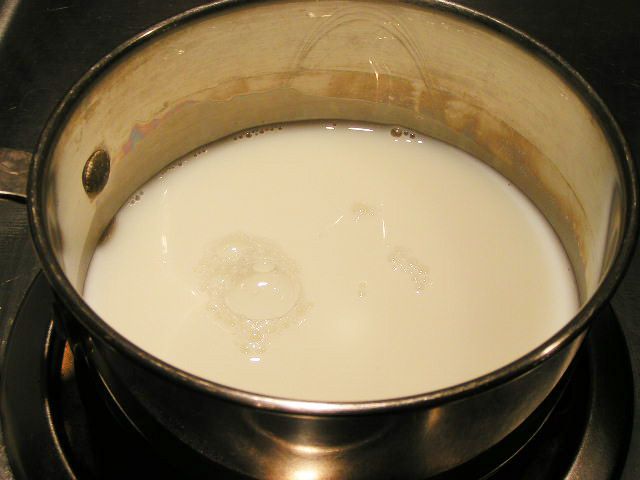 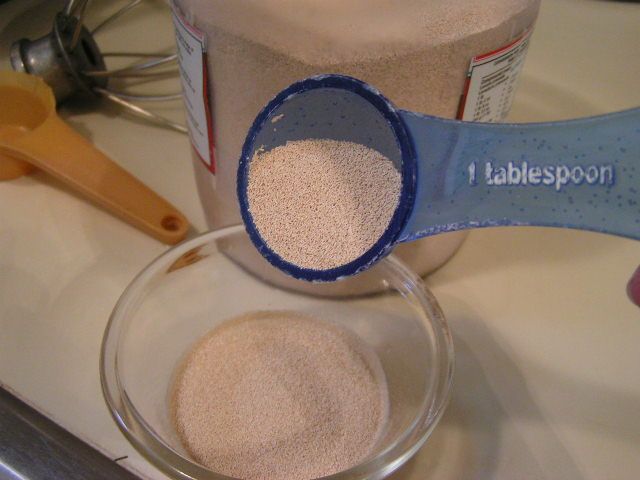 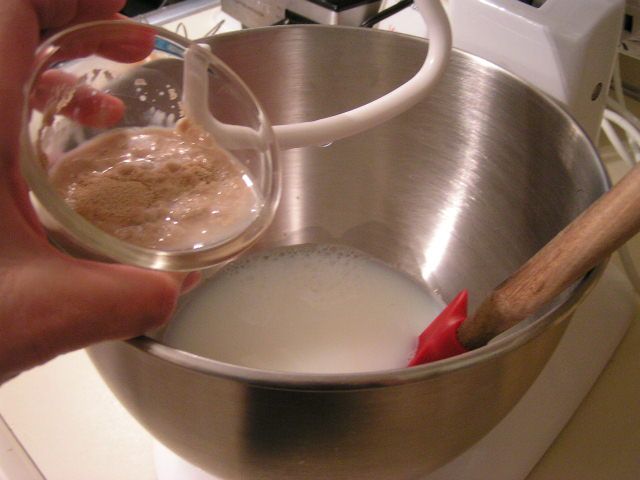   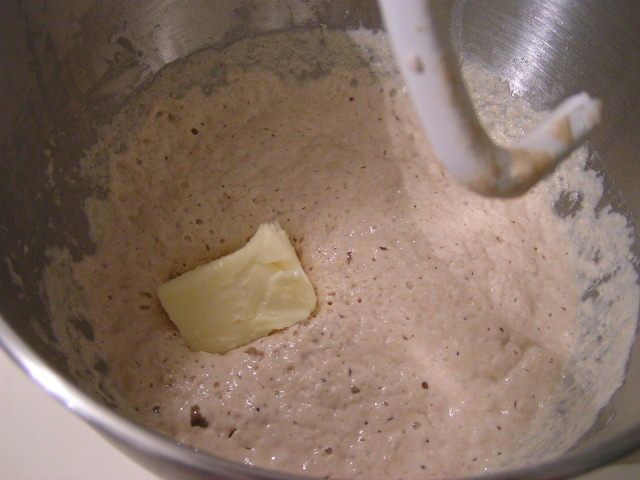 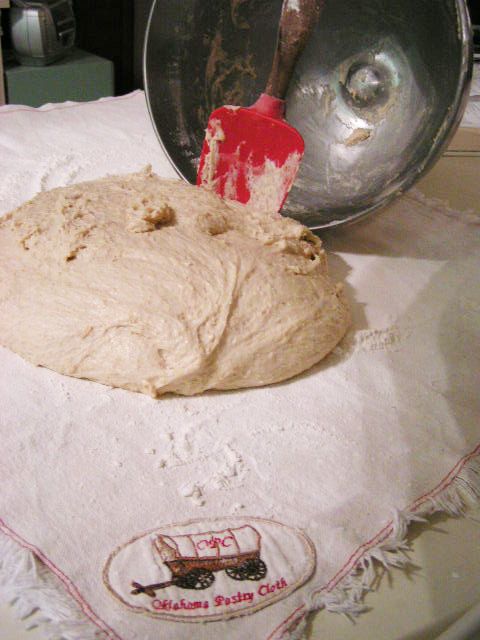 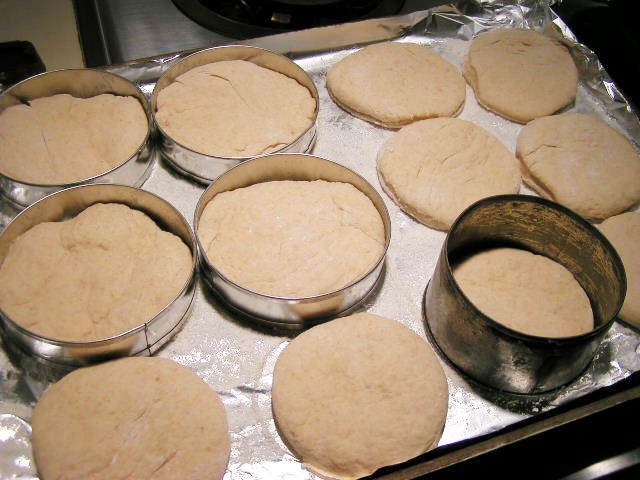 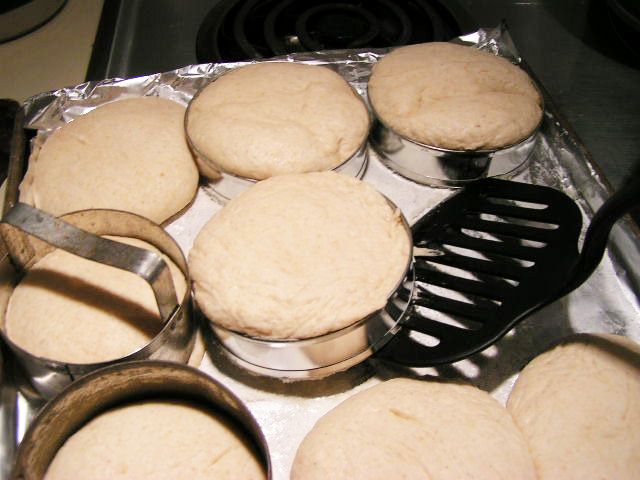 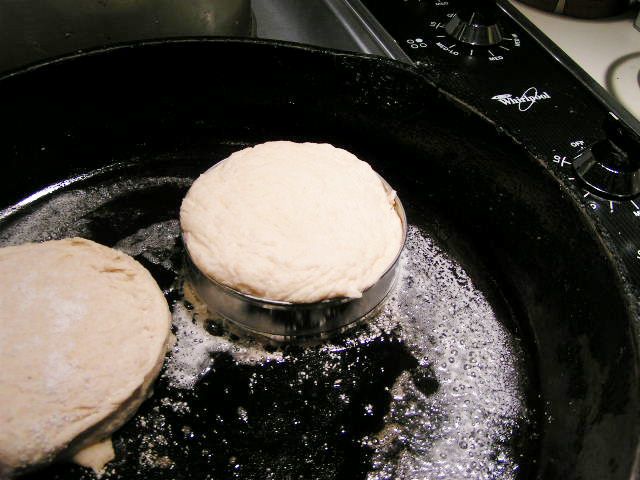 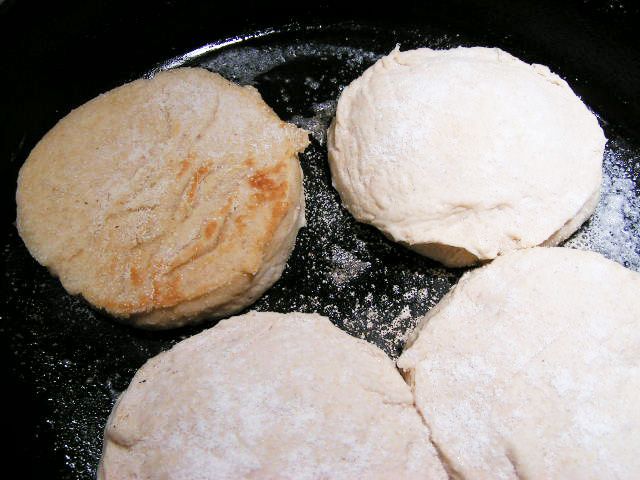 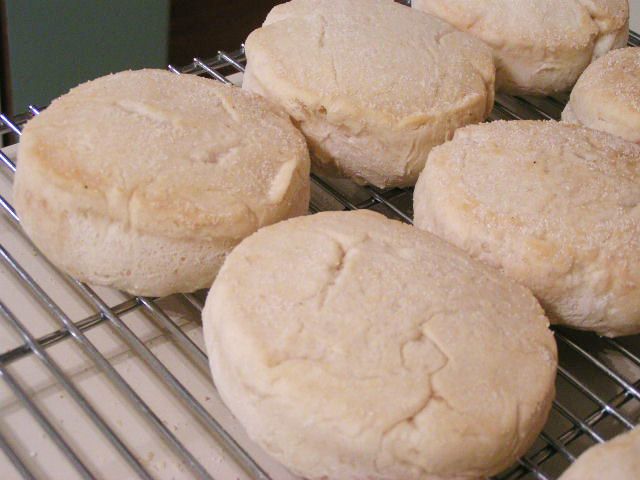 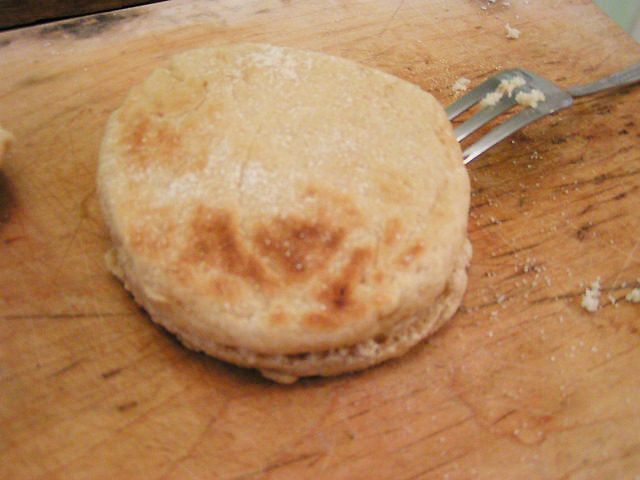 I don’t care where these precious breads were invented or if they were just a mistake on the part of a bad English baker who immigrated to the US, they are delicious and a real treat. Next post, I’ll show you something that you can do with them that will thrill the kids. Until then…. |
|
Oklahoma Pastry Cloth™ Company on Facebook
|
|
|
Posts Tagged ‘cooking’
English Muffins
Thursday, December 30th, 2010
Belgian Waffles
Monday, October 11th, 2010
|
Of course, with any new-fangled idea, there were bugs, the major one being that when the cook used one of these pans, what looked like bugs appeared in the scrambled eggs or the white gravy, due to flakes of the nonstick surface loosening. Small sheets of Teflon® floated in the cooking food and small, shiny hints of the base metal were exposed. If you were the least bit paranoid, you worried that your family was ingesting some poisonous substance that the government had invented to get rid of half of the population to save the planet. If you weren’t paranoid, you surmised that maybe Teflon® wasn’t such a great invention after all. Then came the nonstick surface that was co-mingled with the base metal of the cooking utensil. That was better. I think that T-Fal® was one of the first. It worked pretty well, but we quickly figured out that nonstick didn’t really mean, NONSTICK. It just meant “not-as-likely-to-stick-especially-if-you-use-oil-to-coat-the-pan-like-you-did-for-your-old-pans-that-were-not-nonstick.” I had a whole set of T-Fal® and still have a few cookie sheets, but while they were the “thing” in the ‘70’s, as I became more and more entrenched in the kitchen, I gravitated back to my perfectly seasoned, cast iron skillets and wonderful three-ply bottomed, heavy-weight, stainless steel pots and pans. Wouldn’t trade them for the world. It is with this background of wisdom that I should ask myself, “What were you thinking?” because, recently, I couldn’t resist the purchase of a nonstick surfaced Belgian waffle maker that was on sale. Actually, another waffle iron was on sale, but the store was out and because I had such a pained expression on my face and the manager probably thought that my gray hair indicated that I might be hard to get along with, I was handed a more expensive, with more gadgets, Belgian waffle iron at the sale price. It had a timer that beeped! I took my prize home, predictably thrilled at beating the system of sales, and quickly unboxed it to prepare for the next day’s breakfast surprise for Hubby – waffles topped with strawberries and whipped cream. I read the directions for the batter – easy enough – decided on how I was going to change it (added vanilla) because it isn’t in my nature to just follow directions, and made sure that I had all ingredients required. I got up the next morning, whipped up the batter in a matter of minutes, heated the waffle iron until the light went out and carefully measured ¼ cup of batter into each section. Closing the lid, I flipped the whole assembly on the stand, over to the opposite side as per the directions. Steam gushed from the seam of the surfaces and a wonderful sizzling sound let me know that breakfast was on its way. The timer automatically began its countdown.  At the ear-piercing shriek of the waffle siren, I jumped out of my skin and rushed to flip the waffle iron back to the other side of the stand. I gently lifted the lid – well – attempted to lift the lid, but nothing separated. I got a plastic fork and slipped it between the layers of metal to carefully pry them apart but nothing budged. But it’s a nonstick surface! The box said so…. no oil needed. It’s 2010! It’s new and improved! I flipped it back to the other side and tried gently pulling the sections apart. No dice. I turned it over to its original position and thought, “Maybe I’m not pulling hard enough.” I gave it a hard tug and jerked the top lid off of the bottom surface. One half of the waffle traveled with the lid and the other half stayed on the bottom. Now you know that you are NOT to use ANY metal utensils on nonstick cookware. Plastic only. And so, I took the plastic fork and carefully slid it under the top half of the waffle. Fully expecting for the waffle to lift off the surface, I was sorely disappointed. The tines of the fork slipped through the cooked dough, and succeeded only in removing a couple of chunks. I tried a different location with the same results. At this point, I was frustrated and I started digging at the center of the mess. Some of the pastry lifted out of the multiple indentions, but the majority remained adhered to this “nonstick” epitome of false advertising. The tines on the fork broke. Of course, it never occurred to me, at the time of purchase, to see if the two cooking surfaces could be removed for easy cleaning. And of course they could not be removed. They opened into a gigantic “L” with teeth, every tooth encrusted with waffle plaque. The lettering on the base cautioned, “DO NOT IMMERSE”. Why would I need to immerse it?? It is nonstick, for crying out loud! My only recourse was to concentrate on one surface at a time, digging out as much of the now rock-hard waffle as possible. I poured hot water just to the batter level to soak and finally washed with a brush, repeating the process for the other side. This took most of the morning. Did I mention that my husband ate cereal that day? 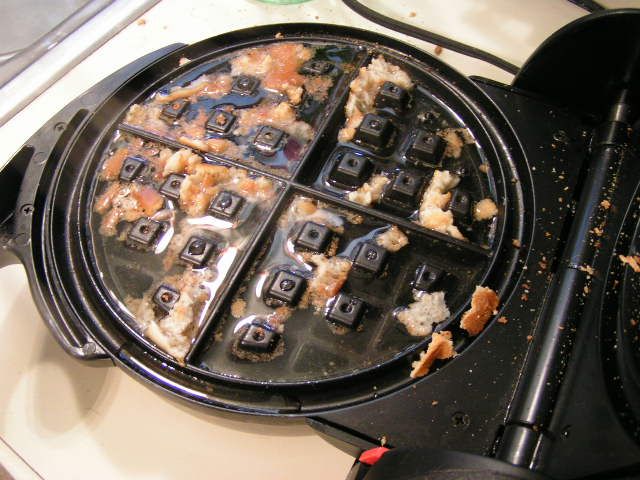 Yes, all of the labor saving brilliance that is dangled before us cooks have obviously been created by inventors who never really watched the process of food preparation and cleanup, let alone attempted it themselves. However, I will say that one such item HAS put its comrades to shame, as it has proved to perform in exactly the way it was intended. It has made available for my dear husband, the Belgian waffles that he loves, baked on the aforementioned, offending waffle maker. This product states on its label, “no stick, fat free, cholesterol free, calorie free, sodium free, naturally clear”…Yep. It’s spray olive oil in a can and it works like a charm. Who would have ever thought of putting oil on the surface of a cooking utensil to keep food from sticking? What will they think of next?? |
|
1 3/4 cups all-purpose flour or pastry flour 1 tbsp baking powder 1/2 tsp salt 2 tsp sweetener (honey, sugar, splenda, etc.) |
1 3/4 milk (2%, whole, skim) 2 eggs, separated 2 tbsp vegetable oil Possible additions: 1 tsp cinnamon 1/2 cup chopped pecans |
|
Oklahoma Pastry Cloth™ Company on Facebook
|

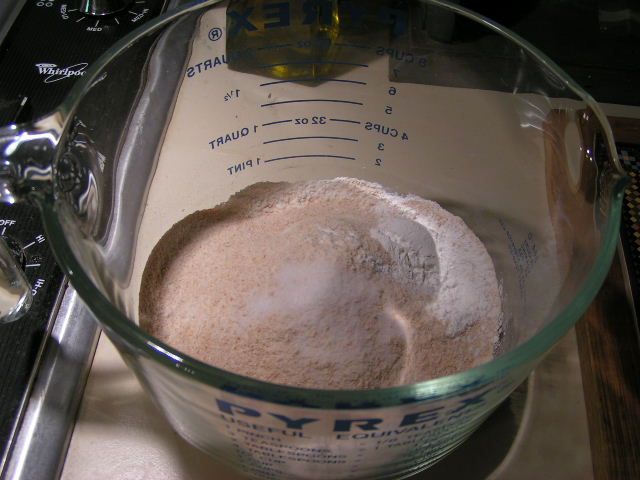
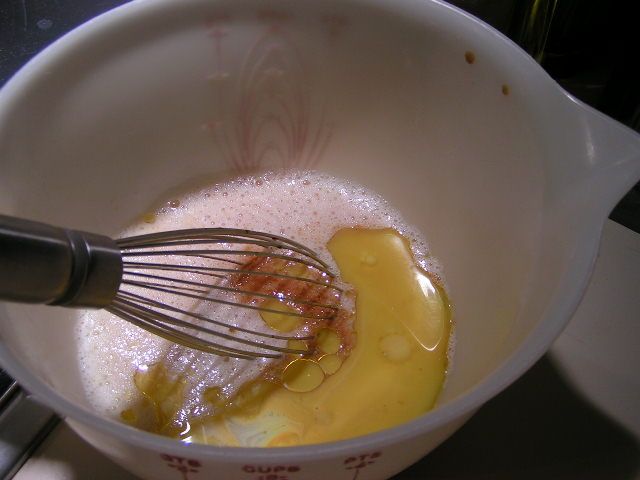
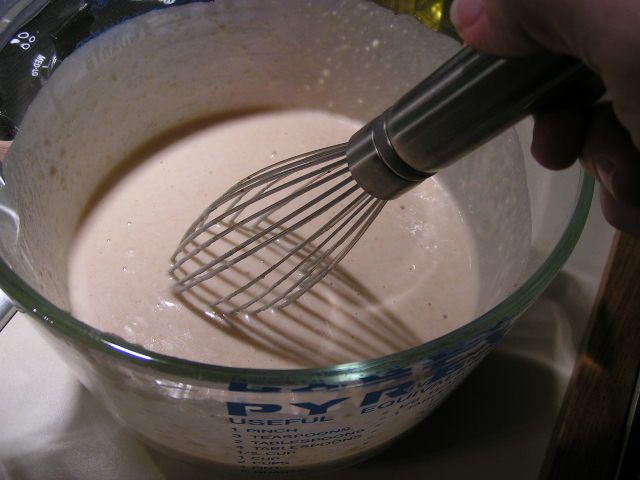

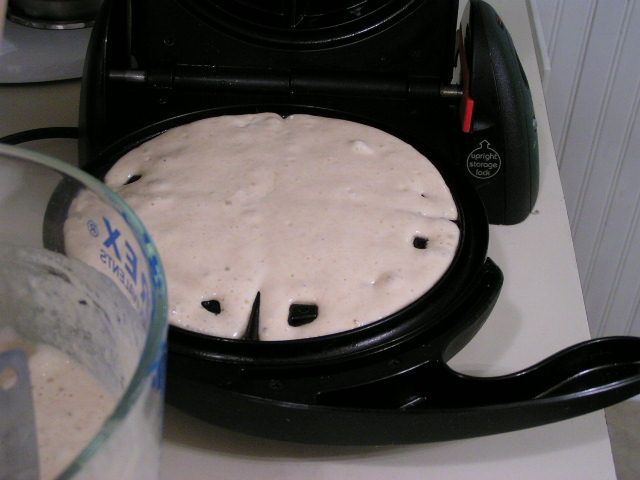
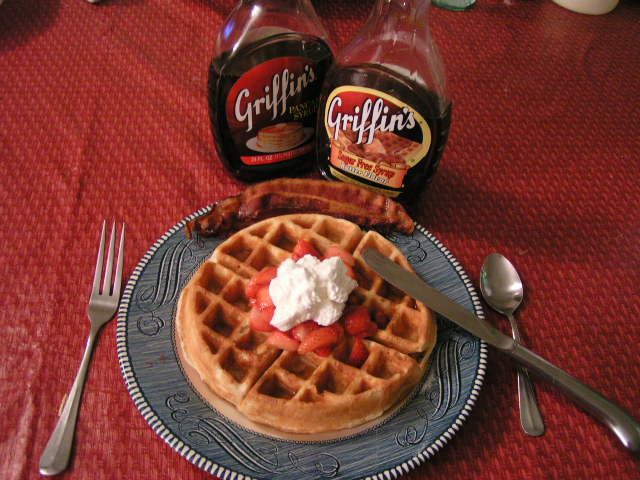
 Homestead Revival
Homestead Revival Paratus Familia
Paratus Familia Rural Revolution
Rural Revolution